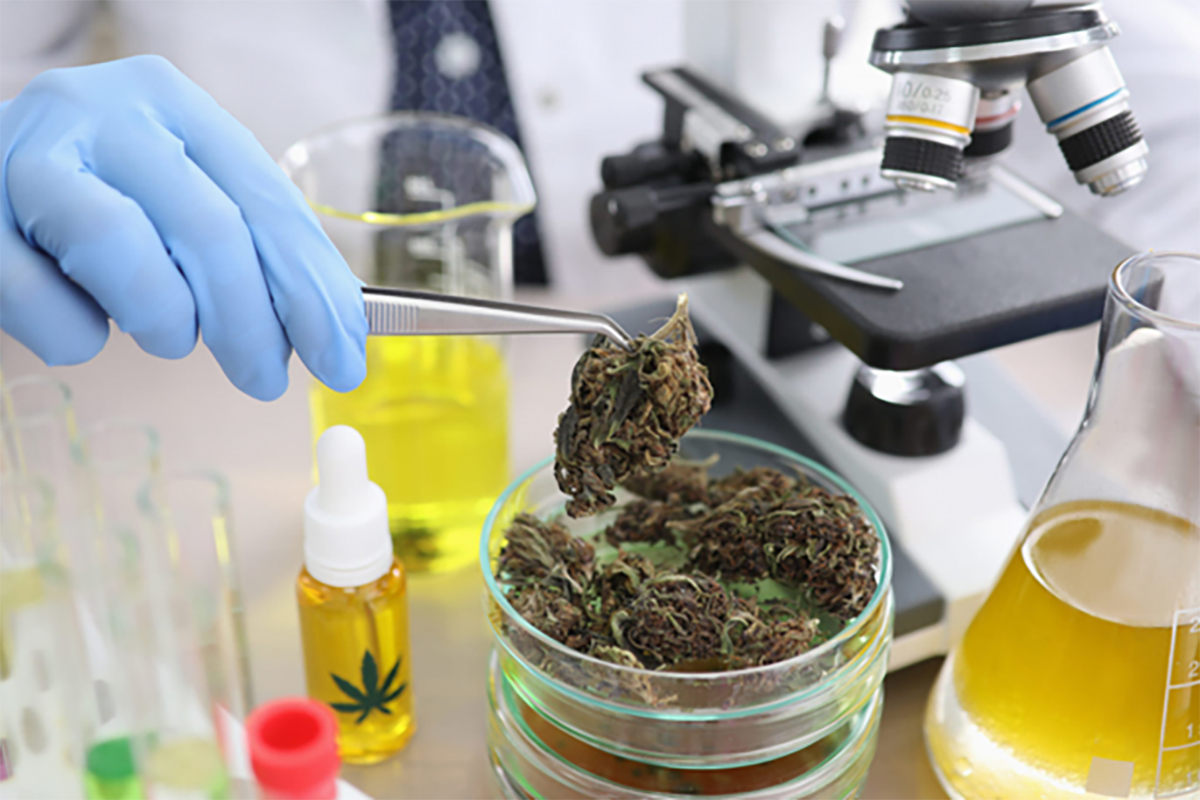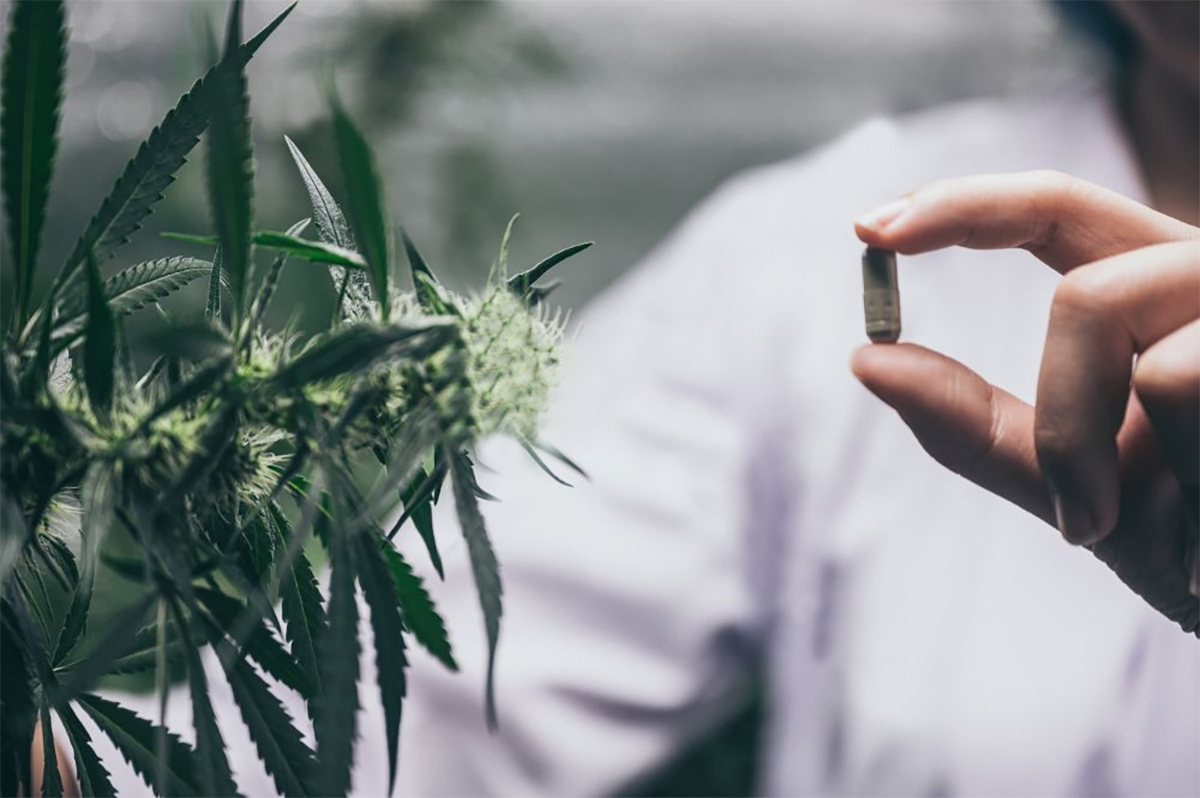Cannabinol (CBN)
The History of CBN
CBN was actually the first phytocannabinoid to be isolated from a cannabis extract in 1896, decades before the discovery of CBD. It was the first to have its chemical structure elucidated in the early 1930s, and its chemical synthesis was achieved in 1940. CBN was originally suspected to be the compound that produces that euphoric ‘high’ from consuming cannabis until later research revealed it was THC (tetrahydrocannabinol) instead. In the mid-20th century, pharmacological experiments provided early evidence that CBN has much lower potency than THC as a psychotropic agent—and that CBD lacks psychotropic activity altogether. Given its history, one could say that CBN is the older sibling of CBD, and yet there is currently a lack of research on CBN compared to CBD.

How Does CBN Work?
While both are derived from the same plant, CBN has a different chemical structure to CBD and, therefore, works differently. It is formed from the breakdown of THC when THC is heated and exposed to light and oxygen. As such, it is usually present in higher amounts in older cannabis. CBN borrows some of its chemical properties from THC, especially in how it acts on the endocannabinoid system in the human body, particularly CB1 receptors. This process creates the euphoria that people associate with cannabis, except CBN does it at a much lower strength than THC. Undoubtedly, this binding means CBN is still a psychoactive compound, and some people still may notice psychotropic effects. One scientist estimates the potency of CBN at between 1/6 and 1/10 of that of THC. In comparison, CBD does not appear to attach to the CB receptors directly, and so it produces none of those euphoric effects.
What Are the Benefits of CBN?
Many researchers believe that the ‘entourage effect’ occurs where the consumption of cannabinoids together in combination, rather than as isolated compounds, produces the most potent and powerful effects. These researchers would argue that given different components of cannabis offer their benefits. It would be better to consume it as a whole. At the same time, extracting one component may allow cannabis lovers to reduce the unwanted effects of other components—some could do without the euphoric effects of THC, for example. In that regard, CBN shares a few similar benefits to its younger sibling CBD, including better sleep quality, pain relief, anti-inflammation, and anti-convulsant properties.
Sleep and other sedating properties are where CBN shines, likely thanks to the degradation of terpenes. CBN is reported to cause a sense of peacefulness and relaxation, although there is no evidence to suggest it is effective as a sedative on its own. In fact, a combination of CBN and THC has been shown to produce stronger sedative effects than THC alone. In terms of pain relief and anti-inflammation, multiple rat studies found that both CBN effectively reduced myofascial pain, inflammation caused by arthritis, and even neuroprotective effects. However, human studies are required before being prescribed for these medical purposes. Some have suggested that the best way to take advantage of CBN’s (and CBD’s) pain-relieving properties is to use it directly as topical medication to the affected area. This allows the compound to bypass the digestive system and lowers potential interactions with other drugs.
Studies have also found that CBN may be an effective antibacterial agent against strains of MRSA bacteria that are resistant to traditional antibiotics. It also has vasorelaxant properties, which can help reduce blood pressure and possibly pressure in the eye for glaucoma patients. And while CBD can act as a mild appetite suppressant, CBN is purported to be more of an appetite stimulant—the munchies without the high.

How and Where Can I Get CBN?
As mentioned above, old cannabis could simply be left exposed to light, heat or air, and end up with higher CBN levels than fresher or well-stored products. Therefore, environmental factors rather than genetic factors determine the level of CBN in a cannabis flower or concentrate. There are currently no cannabis strains with high-CBN content on the market. Due to its psychotropic effects and the fact that it is derived directly from THC, CBN products are treated more like marijuana than CBD, which means they are only available to purchase in states where recreational use is legal or with a prescription from a medical professional. It is not listed as a scheduled controlled substance in any of the countries of the United Nations’ Single Convention on Narcotic Drugs, nor is it listed in their Convention on Psychotropic Substances.
CBN is largely sold through regulated dispensaries as a sleep aid and comes in forms like oils, tinctures, capsules, tea bags, isolates, and, more recently, disposable vape pens. Vaporizers are one of the fastest-acting consumption methods, although tinctures also work quickly. Anyone interested in using CBN, especially as a supplement instead of recreationally, should consult their doctor. It is important to get a recommendation on a starting dose and any possible interaction with any medication currently taken.